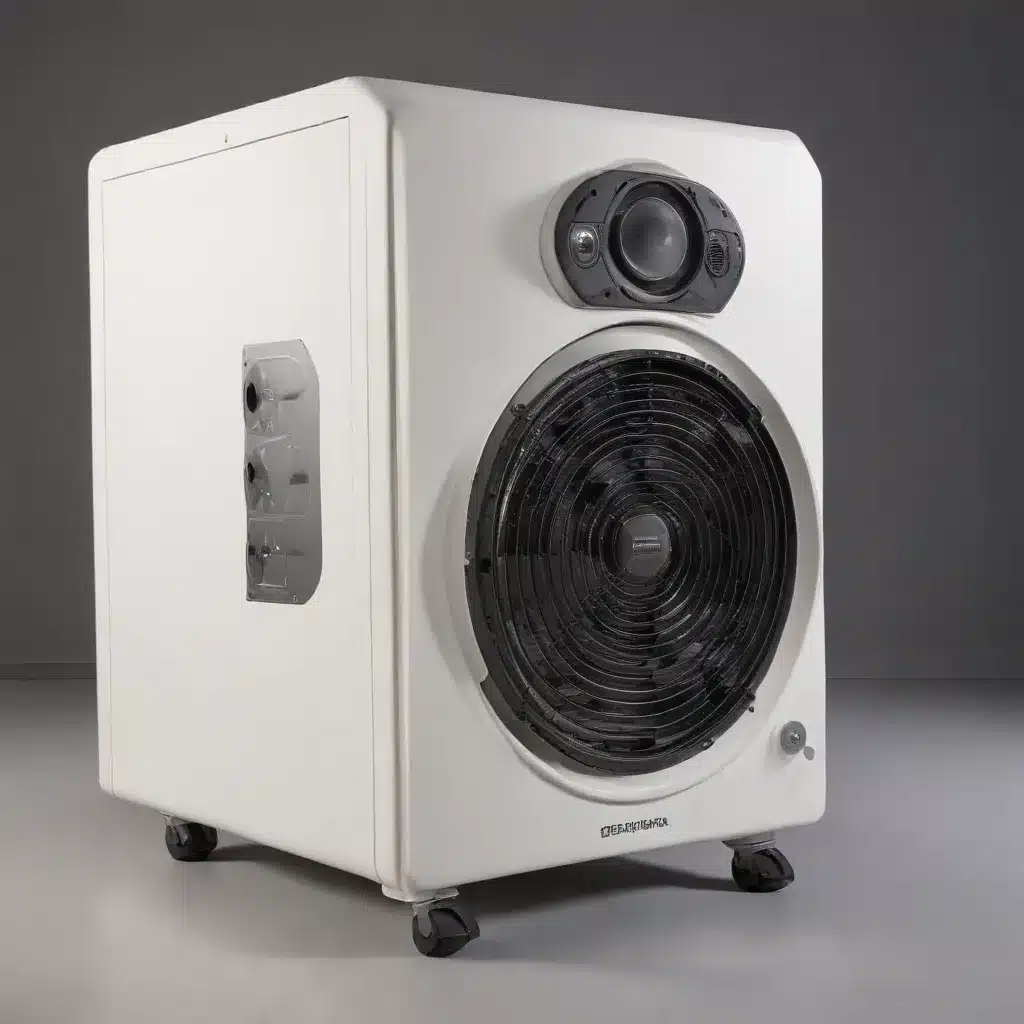
The Quest for Efficient, Eco-Friendly Heating Solutions
As the world becomes increasingly conscious of the environmental impact of our energy consumption, the demand for sustainable and efficient heating solutions has never been greater. Wood stoves, long cherished for their ability to provide cozy warmth, have emerged as a viable option for homeowners seeking a more eco-friendly alternative to traditional heating methods. However, the quest for truly revolutionary heating systems has led researchers and engineers to explore innovative technologies that push the boundaries of efficiency and environmental responsibility.
In a groundbreaking study published in The Innovation Energy journal, a team of researchers from the Key Laboratory of Cryogenic Science and Technology, the Technical Institute of Physics and Chemistry, the Chinese Academy of Sciences, and the Karlsruhe Institute of Technology have unveiled a remarkable advancement in the field of heat-driven cooling systems. Their work, titled “Sustainable Heat-Driven Sound Cooler with Super-High Efficiency,” presents a novel approach to heat-driven thermoacoustic refrigeration that promises to revolutionize the way we think about sustainable heating and cooling.
The Limitations of Traditional Heat-Driven Refrigeration
Conventional heat-driven refrigeration systems, such as absorption refrigerators and adsorption refrigerators, have long struggled with a fundamental challenge: their coefficient of performance (COP) – a measure of their energy efficiency – has typically been relatively low, often falling below 1.0. This means that for every unit of energy input, these systems can only produce less than one unit of cooling output, resulting in significant energy waste and limited practical applications.
The researchers recognized the need for a paradigm shift in heat-driven refrigeration technology, one that could overcome the efficiency limitations of existing systems and pave the way for a more sustainable future.
The Breakthrough: Introducing the Novel Heat-Driven Thermoacoustic Refrigerator (HDTR)
The researchers’ solution lies in the development of a novel heat-driven thermoacoustic refrigerator (HDTR) that utilizes a unique “bypass” configuration to achieve unprecedented levels of efficiency. Unlike traditional direct-coupling HDTRs, which suffer from inherent limitations, the team’s innovative approach introduces a bypass tube that allows for precise control of the system’s thermodynamic parameters, ultimately resulting in a staggering COP of 1.34.
The Bypass Configuration: A Game-Changer in Efficiency
The key innovation lies in the bypass configuration of the HDTR system. By incorporating a bypass tube that diverts a portion of the working gas flow, the researchers were able to optimize the system’s performance and overcome the challenges faced by traditional direct-coupling HDTRs.
The bypass tube, equipped with a strategically placed ball valve, allows for the precise adjustment of the bypass proportion (φ), which is the ratio of the bypass flow rate to the total flow rate. By fine-tuning this parameter, the researchers were able to achieve an exceptional balance between the engine and cooler units, maximizing the overall efficiency of the system.
Through comprehensive simulations and experimental validation, the researchers demonstrated that their novel HDTR with the bypass configuration consistently outperformed the traditional direct-coupling design, achieving a remarkable COP of 1.34 – a significant improvement over the typical COP values of less than 1.0 for conventional heat-driven refrigeration systems.
Sustainable and Eco-Friendly Operation
The researchers’ HDTR system not only boasts impressive efficiency but also aligns with the growing demand for sustainable and eco-friendly heating and cooling solutions. By utilizing heat as the primary energy source, the HDTR eliminates the need for electricity-powered compressors, which are commonly found in traditional refrigeration systems.
This heat-driven approach not only reduces the carbon footprint of the system but also opens up new possibilities for integrating renewable energy sources, such as solar thermal or waste heat recovery, further enhancing the system’s sustainability and environmental impact.
Practical Applications and Future Potential
The implications of the researchers’ breakthrough extend far beyond the laboratory. The high-efficiency HDTR system holds immense potential for a wide range of practical applications, from residential and commercial cooling to industrial process cooling and beyond.
Residential and Commercial Cooling
The ability of the HDTR system to achieve efficient room-temperature refrigeration makes it an attractive option for homeowners and building owners seeking sustainable cooling solutions. By harnessing the power of waste heat or renewable thermal sources, the HDTR can provide reliable and cost-effective cooling, reducing the reliance on energy-intensive air conditioning systems.
Industrial Process Cooling
In the industrial sector, the HDTR system’s high-efficiency performance can be particularly beneficial for applications that require precise temperature control, such as semiconductor manufacturing, pharmaceutical production, and food processing. By integrating the HDTR into industrial processes, companies can enhance their energy efficiency, reduce operational costs, and minimize their environmental footprint.
Potential for Broader Integration
The versatility of the HDTR system extends beyond its cooling capabilities. The researchers envision the possibility of integrating the HDTR technology into wood stoves, fireplaces, and other heating appliances, creating a synergistic system that can provide both heating and cooling functions. This integration could unlock new avenues for homeowners and businesses to achieve comprehensive energy management and maximize their energy efficiency.
Conclusion: A Sustainable Future Powered by Innovation
The groundbreaking work of the researchers behind the sustainable heat-driven sound cooler with super-high efficiency represents a significant stride forward in the quest for eco-friendly heating and cooling solutions. By harnessing the power of thermoacoustic technology and introducing a novel bypass configuration, they have overcome the limitations of traditional heat-driven refrigeration systems, paving the way for a future where energy efficiency and environmental responsibility go hand in hand.
As the world continues to grapple with the challenges of climate change and the pressing need for sustainable energy solutions, the HDTR technology stands as a beacon of hope, demonstrating the transformative power of innovation. By seamlessly integrating into existing heating systems and industrial processes, this remarkable technology has the potential to revolutionize the way we approach energy management, ultimately contributing to a more sustainable and environmentally conscious future.
The journey towards a greener and more efficient heating and cooling landscape is far from over, but the groundbreaking work of the researchers behind the sustainable heat-driven sound cooler has undoubtedly laid the foundation for a brighter, more sustainable tomorrow.


